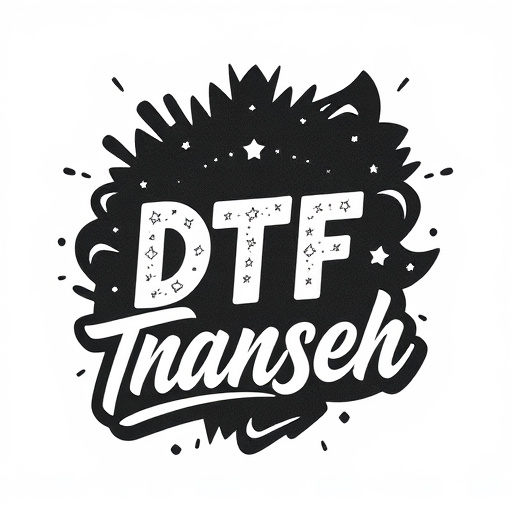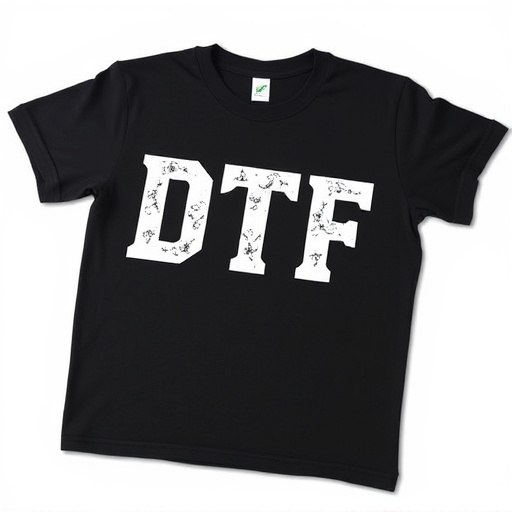Mastering DTF Transfers: From Creation to Removal
Direct to Fabric (DTF) transfers are a game-changing printing technique offering high-quality, vibra…….
Welcome to an in-depth exploration of a revolutionary technology that is transforming the way we produce printed materials: Hot Peel DTF (Direct-to-Film) transfers. This cutting-edge process has emerged as a game-changer in the printing industry, offering unparalleled efficiency, versatility, and quality. In this article, we will embark on a journey through the world of DTF transfers, unraveling its intricacies, uncovering its global impact, and examining its potential to shape various sectors. By the end, readers will grasp the significance of this technology and its role in driving innovation across industries.
Definition: Hot Peel DTF transfers, short for Direct-to-Film Thermal Transfer, is a printing technique that enables the direct application of intricate designs and images onto various surfaces using thermal film. This method eliminates the need for traditional screening or plate-making processes, making it highly efficient and versatile.
Core Components: The process involves several key elements:
Thermal Film: Specialized films coated with a sensitive heat-active adhesive. These films can be printed with fine details and are designed to withstand high temperatures during the transfer process.
Design File Preparation: High-resolution digital designs, typically created using graphic design software, are prepared for printing. This file is optimized for direct thermal transfer onto the chosen substrate.
Printing Press or Heat Press: A machine that applies heat and pressure to transfer the image from the thermal film to the desired surface. Modern systems offer precise control over temperature and pressure for optimal results.
Historical Context: The roots of DTF technology can be traced back to the late 20th century when advancements in thermal printing and adhesive technologies laid the foundation. Over time, improvements in ink formulations and printing presses have led to its refinement as a viable commercial process. Today, DTF transfers find applications in diverse fields, from packaging and signage to textiles and even automotive components.
The influence of Hot Peel DTF transfers is truly global, with its adoption spanning multiple continents and industries. Here’s a snapshot of its international impact:
| Region | Key Applications | Growth Drivers |
|---|---|---|
| North America | Packaging, signage, promotional products | Advanced printing infrastructure, early adopters in tech |
| Europe | Textile printing, automotive interior trim | Strict environmental regulations, focus on sustainability |
| Asia Pacific | Packaging, e-commerce labels, textiles | Rapid e-commerce growth, thriving manufacturing sector |
| Latin America | Signage, vehicle graphics | Increasing urban population, growing demand for personalized products |
| Middle East & Africa | Signage, architectural coatings | Construction boom, focus on innovative building materials |
Trending Developments:
Sustainable Focus: There is a growing emphasis on eco-friendly DTF inks and substrates, driven by global sustainability initiatives. Water-based and solvent-free inks are gaining popularity.
Customization and Personalization: DTF transfers enable precise, high-quality printing on demand, catering to the rise of customized products in various sectors.
Integration with Digital Technologies: The integration of DTF printing with digital design tools and online platforms is streamlining production and distribution, especially in e-commerce.
The economic landscape surrounding Hot Peel DTF transfers is dynamic and multifaceted.
Market Dynamics:
Investment Patterns:
Economic Impact:
The continuous evolution of Hot Peel DTF transfers is driven by technological breakthroughs, pushing the boundaries of what’s possible in printing.
Key Developments:
Ultra-High Resolution Printing: Advances in inkjet technology and printing presses have enabled DTF transfers with unprecedented detail and image quality, rivaling traditional offset printing.
Flexible Substrates: The development of flexible thermal films allows for printing on curved surfaces, opening doors for innovative applications in packaging, wearable technology, and automotive interiors.
Automate Quality Control: Automated inspection systems are being integrated into DTF printing processes to ensure consistent high-quality output, reducing human error and improving efficiency.
Future Prospects:
Hot Peel DTF transfers have found their way into various sectors, transforming the way businesses operate and consumers interact with products.
Packaging: DTF printing is revolutionizing packaging design, enabling complex graphics, brand logos, and product information directly on packages. This trend is particularly evident in e-commerce, where personalized, eye-catching packaging enhances the unboxing experience.
Textiles: From fashion to home textiles, DTF transfers offer designers and manufacturers a fast, cost-effective way to print intricate patterns and designs onto various fabrics.
Signage and Graphics: The ability to produce high-quality, durable prints on demand has made DTF transfers a preferred choice for outdoor signage, vehicle graphics, and architectural coatings.
Automotive Interior Trim: DTF technology is being utilized to create custom interior components, such as door panels and dashboards, with intricate designs and personalized color schemes.
As with any emerging technology, Hot Peel DTF transfers come with both advantages and challenges.
Benefits:
Challenges:
As technology continues to evolve, Hot Peel DTF transfers are poised to play an even more prominent role in various industries. Here’s a glimpse into the future:
Hot Peel DTF transfers have emerged as a powerful force in the printing industry, offering unparalleled efficiency, versatility, and quality. Its global impact across diverse sectors is a testament to its transformative potential. As technology continues to advance, DTF transfers will play an increasingly vital role in shaping the future of design, manufacturing, and consumer experiences. By embracing this innovation, businesses can stay ahead of the curve, drive growth, and deliver exceptional products and services to their customers.

Direct to Fabric (DTF) transfers are a game-changing printing technique offering high-quality, vibra…….

Direct to Fabric (DTF) technology is a cutting-edge method for printing designs directly onto fabric…….

DTF (Direct-To-Film) prints revolutionize printing with unparalleled precision, vibrancy, and versat…….

DTF Transfers are transforming printing and packaging with their warm removal feature, enabling swif…….

DTF (Direct Thermal Transfer) films revolutionize temporary decoration by allowing intricate designs…….

DTF Transfers (Removable While Warm) offer unprecedented versatility and efficiency in printing by e…….

DTF (Direct-to-Film) Printing is a swift and versatile method for transfer creation, popular in fash…….

DTF (Direct-To-Film) prints revolutionize printing by applying ink directly to film, enabling instan…….

DTF Transfers revolutionize printing with their removable warm transfer technology, offering effortl…….